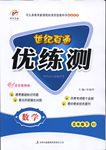题目内容
【题目】Foldable future has arrived
Tablets are really useful devices, but their big screens always make them as a burden to carry around without a bag. Wouldn’t it be great if there were a phone with the powers of a tablet that could be folded up and fit into the hand?
Now something like a tablet-shaped but foldable phone is about to show up. In February, South Korean electronics company Samsung and China’s Huawei both produced foldable phones, The Galaxy Fold and Huawei Mate X. Mobile phone use has entered the “foldable future”, The Verge said.
The technology could change our lives in meaningful ways. These devices, because of their bendable screens, give us the larger screens we want. Meanwhile, they still fit easily into the pocket.
The technology could change other devices too. For example, we could make TVs that stick to walls like posters, or fold up easily to hide away in drawers. In crowded modern cities, they will help us to make full use of space.
In a speech, Samsung’s senior vice president of mobile product marketing, Justin Denison, called the foldable screen “the base for the smartphone of tomorrow”. “It’s a white paper for us to do something beautiful together,” he said.
According to tech news website Android Authority, the necessary parts of foldable phones were difficult to produce. In 2012, nine out of every 10 OLED screens produced were not perfect. Today, that 10 percent rate has been improved to between 50 and 90 percent. However, at present these foldable devices are expensive. For example, the price of Huawei Mate X is 17,500 RMB. That’s a price that few people will be able to afford.
But if the foldable device isn’t going to change the world overnight, there is no doubt that it is coming. Patrick Moorhead, an industry analyst told The Verge, “Few are debating if foldable mobile screens are the future of smartphones; the only question is when and by whom.
【1】What is the main idea of Paragraph 3 and 4?
A.Possible advantages of the foldable screen.
B.Where the idea of foldable screens came from.
C.Popular foldable screen devices on the market.
D.People’s words on the foldable screen.
【2】What can we learn from Denison’s words?
A.The Galaxy Fold still has many problems.
B.The foldable screen has bright future.
C.The production of foldable phones will soon increase.
D.Companies need to work together to develop foldable phones.
【3】Which statement is TRUE about the problem of foldable phones now?
A.90 percent of their screens are not perfect.
B.Their screens are difficult to produce.
C.They are too expensive for most families.
D.They are not as useful as thought.
【4】What is the author’s attitude toward the future of the foldable screen?
A.PositiveB.Unconcerned
C.WorriedD.Cautious.
【答案】
【1】A
【2】B
【3】C
【4】A
【解析】
这是一篇说明文。文章讲述了可折叠手机时代即将到来。
【1】主旨大意题。由第三段第一句The technology could change our lives in meaningful ways.(科技可以以有意义的方式改变我们的生活)和第四段第一句The technology could change other devices too.(这项技术也可能改变其他设备)可知,三四两段主要讲述了可折叠屏幕可能的优点。故选A项。
【2】推理判断题。由第五段的Justin Denison, called the foldable screen “the base for the smartphone of tomorrow”. “It’s a white paper for us to do something beautiful together,” he said.(Justin Denison在一次演讲中称,可折叠屏幕是“未来智能手机的基础”。“这是一份白皮书,让我们一起做一些美好的事情,”他说)可推断出,可折叠屏幕会有光明的未来。故选B项。
【3】细节理解题。由倒数第二段的However, at present these foldable devices are expensive. For example, the price of Huawei Mate X is 17,500 RMB. That’s a price that few people will be able to afford.(然而,目前这些可折叠装置价格昂贵。例如,华为Mate X的价格是17500元人民币。这个价格很少有人能负担得起)可知,可折叠产品价格昂贵,很少人负担得起。故选C项。
【4】推理判断题。由最后一段第一句But if the foldable device isn’t going to change the world overnight, there is no doubt that it is coming.(但如果这个可折叠装置不会一夜之间改变世界,毫无疑问它会到来)可知,作者对可折叠产品持有积极态度。故选A项。

 世纪百通主体课堂小学课时同步达标系列答案
世纪百通主体课堂小学课时同步达标系列答案 世纪百通优练测系列答案
世纪百通优练测系列答案 百分学生作业本题练王系列答案
百分学生作业本题练王系列答案